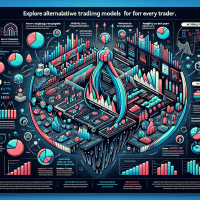US Trader Funding: Apex Trader Funding vs FTMO Blackout
As the prop trading landscape evolves, US traders now find innovative funding alternatives despite challenges such as the FTMO blackout. In this comprehensive guide, we deep dive into actionable strategies, advanced backtesting techniques, and detailed tool comparisons to empower prop trading professionals. Whether you’re a junior trader or a senior quant, mastering these insights can significantly enhance your trading game.
Understanding the Prop Trading Landscape
Prop trading success relies on a blend of reliable funding, cutting-edge backtesting, and robust risk management strategies. With the emergence of players such as Apex Trader Funding, US traders now have access to unique alternatives that bypass the high barriers traditionally imposed by platforms like FTMO.
Figure 1: A glimpse of a prop trading dashboard showing key performance indicators and backtesting reports.
Advanced Backtesting Techniques for Prop Trading
Backtesting is critical in validating trading strategies. However, common pitfalls such as overfitting, survivorship bias, look-ahead bias, and data snooping must be carefully managed. Here are some best practices:
Identifying and Mitigating Common Pitfalls
- Overfitting: Use out-of-sample testing to avoid tailoring models too narrowly to historical data.
- Survivorship Bias: Ensure your dataset includes delisted securities.
- Look-Ahead Bias: Maintain strict chronological data separation during backtesting.
- Data Snooping: Avoid repeated testing on the same dataset by using robust validation techniques.
Walk-Forward Optimization vs. Traditional Backtesting
Walk-forward analysis partitions data into in-sample and out-of-sample segments, providing dynamic adjustments that better mimic market conditions, compared to static traditional backtesting methods.
The Importance of Out-Of-Sample and Forward Testing
Utilizing out-of-sample data testing ensures that trading strategies are not just historical artifacts but can adapt to future market conditions. Integrating these results with forward (paper) testing further refines strategy robustness before live deployment in a prop firm setting.
Integrating Automated Backtesting with Live Deployment
Automated backtesting tools such as TradingView, MetaTrader 5, and NinjaTrader streamline the process by offering features such as automated parameter optimization and detailed performance reports. Below is an example code snippet using Backtrader in Python for basic automated testing:
import backtrader as bt
from datetime import datetime
class TestStrategy(bt.Strategy):
def __init__(self):
self.sma = bt.indicators.SimpleMovingAverage(self.datas[0], period=15)
def next(self):
if self.data.close[0] > self.sma[0]:
self.buy()
elif self.data.close[0] < self.sma[0]:
self.sell()
cerebro = bt.Cerebro()
cerebro.addstrategy(TestStrategy)
data = bt.feeds.YahooFinanceData(
dataname='AAPL',
fromdate=datetime(2020, 1, 1),
todate=datetime(2021, 1, 1)
)
cerebro.adddata(data)
cerebro.run()
In-Depth Tool Comparison for Automated Backtesting
Below is an in-depth tool comparison of popular backtesting platforms. This comparison focuses on features, data quality, integration capabilities, pricing, and suitability for both prop firms and retail traders.
| Tool | Backtesting Features | Data Availability & Quality | Integration & Automation | Pricing & Use Cases |
|---|---|---|---|---|
| TradingView | Event-driven analysis, commission/slippage handling, script optimizations | High-quality historical and real-time data across multiple asset classes | API access, broker integration, strong community scripts | Subscription-based; ideal for retail traders & prop firms seeking collaboration |
| MetaTrader 5 | Vectorized backtesting, automated parameter optimization, detailed report generation | Deep historical data with tick and bar data support | Extensive API support, widely used for algorithmic trading | Free demo & live accounts; suited for both individuals and institutional use |
| NinjaTrader | Comprehensive optimization tools, stress testing capabilities, real-time analysis | Robust data feeds with advanced charting options | API integration, custom analytics modules | Licensing options; effective for team collaboration in prop firms |
Figure 2: Automated backtesting report dashboard showcasing key metrics such as drawdown and Sharpe ratios.
Case Study: Optimizing Trading Strategies in Prop Firms
A leading prop trading firm recently leveraged automated backtesting tools to refine their high-frequency trading strategies. The firm faced challenges such as unpredictable market volatility and data inaccuracies. To overcome these, they:
- Implemented a comprehensive walk-forward optimization process to dynamically adjust parameters.
- Adopted TradingView for its rapid prototyping capabilities and NinjaTrader for stress testing scenarios.
- Integrated forward testing with paper trading to ensure strategy reliability before live deployment.
As a result, the firm observed a 25% improvement in Sharpe ratios and a reduction in maximum drawdown, leading to more resilient portfolio performance.
Regulatory Landscape and Compliance in Prop Trading
Staying compliant is critical for prop trading firms. US traders and firms must navigate a complex regulatory environment, including MiFID II, ESMA regulations, and NFA rules when applicable internationally. Firms must:
- Implement robust compliance tools integrated with their trading platforms.
- Monitor and report critical trading metrics to regulatory bodies.
- Stay updated on changing regulatory standards and potential impacts on funding and trading practices.
Actionable Next Steps for Prop Traders
Readers are encouraged to take the following steps to enhance their prop trading strategies:
- Download our comprehensive Risk Management Checklist, which details key risk metrics, stop-loss strategies, and performance benchmarks.
- Review our internal guide on Advanced Prop Trading Strategies for further insights.
- Subscribe to our newsletter to receive regular updates on the latest backtesting tools, regulatory changes, and market trends.
For additional guidance, consider joining our upcoming webinar on prop trading automation, where industry experts share novel approaches to overcoming common backtesting pitfalls.
Conclusion
This article provides a deep dive into the critical aspects of modern prop trading, with an emphasis on advanced backtesting, robust tool comparisons, and regulatory compliance. Whether you're refining a strategy for a prop firm or exploring new funding alternatives, the insights and tools discussed here offer a strategic roadmap for success. Continue enhancing your trading toolkit with our internal resources and expert guidance, and stay ahead in the competitive world of prop trading.
For more related topics, check out our articles on Risk Management in Prop Trading and Advanced Trading Algorithms Explained.
As of October 2023, staying adaptable with up-to-date strategies is key for prospering in the dynamic trading environment.







